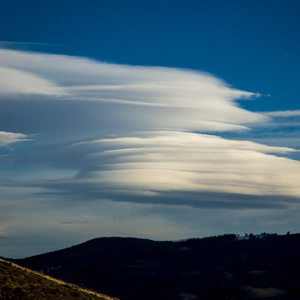 This is the time of year that we turn our eyes towards the skies, watching for that overcast, gray color that could signal the flakes to fly. Clouds have always been a teller of tales. Mountainous structures high above our reach that slowly form and dissipate, making or breaking our ski season, casting a shadow on a rainy afternoon, or giving us much needed shade on a hot summer day. We love a day with pure blue skies—but without clouds, our view of the sky above wouldn’t be the same.
This is the time of year that we turn our eyes towards the skies, watching for that overcast, gray color that could signal the flakes to fly. Clouds have always been a teller of tales. Mountainous structures high above our reach that slowly form and dissipate, making or breaking our ski season, casting a shadow on a rainy afternoon, or giving us much needed shade on a hot summer day. We love a day with pure blue skies—but without clouds, our view of the sky above wouldn’t be the same.
What are Clouds Anyway?
Clouds are usually thought to be water in the form of gas. The reality is, water as a gas is completely invisible. A simple experiment can portray this phenomenon: heat a bit of water in your stovetop tea kettle and soon you’ll hear its call to turn off the heat. Right before you relieve the kettle of its heat source, you’ll see a funnel of white steam blow from its stout and quickly disappear. The visible white steam you can see is composed of water droplets so small and warm enough to be suspended in air which then turn into the invisible form of water as a gas. Clouds are no different. They are large accumulations of water droplets suspended in air, just like the steam you see come out of your tea kettle.
Bring it Back Home
In Colorado, we see clouds year round, but it is the month of November in which we experience one of their most captivating forms. One cloud formation of such interest is the Lenticular Cloud, which appears above mountain tops. Also known as lens clouds, cap clouds, or “flying saucer” clouds, these formations form due to strong and stable winds that follow the curvature of the Rocky Mountains (or any other mountain for that matter) and take the shape of a round spaceship. Just like Colorado’s snow melt streams follow the terrain of a mountainside as they flow down through our valleys; streams of warm, moist air are pushed up above mountains and then back down again. This is why lenticular clouds seem to be stationary; as air streams travels upward, they condense into clouds around cool mountaintops and as they move downward, they return to an invisible gas state. These clouds are fairly unique to the mountain west, and only occur when the conditions are right.
Lenticular clouds, like all clouds, tell us what’s happening in the atmosphere above. And in the Colorado high country, knowing what’s going on above is sometimes a matter of life and death. Dark cumulonimbus clouds in the summer warn us of impending danger from lightning and flash floods. Overcast sheets of gray signal the possibility of fresh snow, which brings delight to those of us ready to hit the slopes, but can also be dangerous for those planning to drive on icy roads or during outdoor excursions, especially if you’re not prepared. The lenticular clouds generally tell us that the atmosphere is windy and turbulent, which often indicates a change of weather coming in.
We watch the skies in Colorado for a variety of reasons. We watch to know the weather, but we also look skyward to appreciate the beauty. The atmosphere above protects our fragile planet from the harshness of space, nurturing us in a life giving bath of oxygen, water, and other swirling gases. Clouds play an important role in the cycling of water, but they also give us a concrete way to see some of the invisible systems and cycles that power our planet. As you look skyward this month, consider the many different manifestations of water and be amazed.
Gerardo Aguilera is a Naturalist and Sustainability Intern at Walking Mountains Science Center in Avon. He likes to learn about the world around him so that he can better understand his connection to the cosmos.









